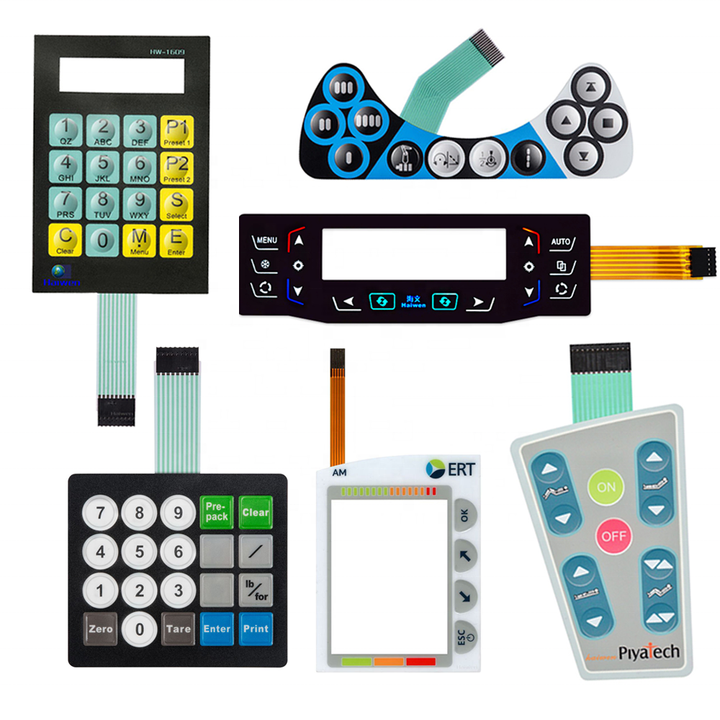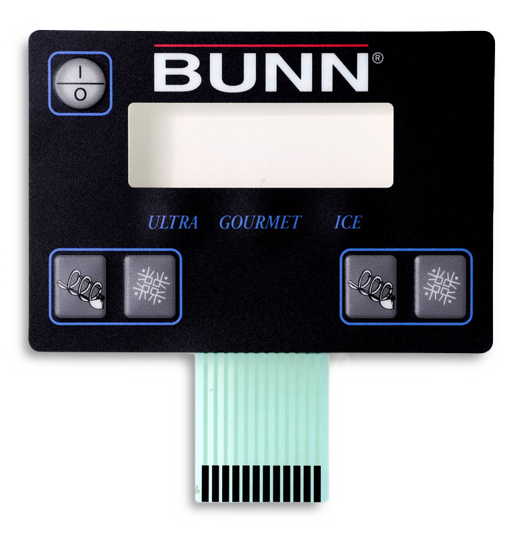The Benefits of Using Membrane Switches in Modern Electronics
Discover Just How Membrane Switches Function and Their Role in Modern Electronic Devices
Membrane Switches stand for an innovative assimilation of modern technology and design within the realm of contemporary electronics, offering as essential interfaces in numerous devices. Included multiple layers, these buttons utilize pressure-sensitive mechanisms to facilitate individual communication. Their applications span various sectors, from customer electronics to clinical devices, highlighting their flexibility and relevance. Comprehending the intricacies of Membrane button capability and their more comprehensive ramifications in enhancing customer experience invites additional expedition right into their layout, advantages, and the innovative advancements forming their future in innovation.
What Are Membrane Buttons?

Membrane buttons are differentiated by their sturdiness and resistance to environmental elements, such as dust, moisture, and extreme temperature levels. They can be customized with different graphics, colors, and tactile feedback alternatives, enhancing user experience while maintaining visual charm - membrane switches. In addition, the consolidation of published circuits permits seamless combination right into gadgets, enhancing general capability.
The adaptability of Membrane switches appears in their ability to support both easy and intricate control functions. They can incorporate functions such as LED signs and touch-sensitive innovation, providing to specific customer demands. As technology continues to advance, Membrane Switches stay crucial for enabling intuitive and efficient customer interfaces, therefore playing an essential role in the development of modern-day electronic gadgets.
Components of Membrane Buttons
Membrane buttons are composed of a number of vital parts that work together to develop a practical and reputable user interface. The key elements include the visuals overlay, glue layer, spacer layer, and conductive traces.
The graphic overlay works as the user interface, commonly printed on an adaptable substrate such as polyester or polycarbonate. This layer not only supplies visual allure but also consists of responsive comments, aesthetic cues, and protective attributes. Under the visuals overlay lies the adhesive layer, which safeguards the button to the device and guarantees resilience versus environmental stress and anxieties.
The spacer layer is important for maintaining the essential void between the graphic overlay and the circuit layer. When pressure is used, this gap enables for the activation of the button. The conductive traces, normally made from silver or carbon, create the electrical pathways that complete the circuit when the switch is engaged.
Furthermore, a support layer might be consisted of for architectural support and insulation. These elements collaborate seamlessly, guaranteeing that Membrane switches are both resistant and straightforward, making them essential in different modern digital applications.
Exactly How Membrane Switches Job
Exactly how do Membrane Switches function visite site efficiently within electronic tools? Membrane Switches run on the principles of pressure-sensitive innovation, using a split building that consists of graphic overlays, glue layers, and conductive aspects.
The layout of Membrane buttons is critical for their effective operation (membrane switches). The layers are thoroughly crafted to provide tactile responses, longevity, and resistance to ecological variables such as wetness and dust. The inclusion of domes-- little, raised locations within the switch-- improves responsive reaction, providing individuals with an obvious click sensation upon activation
Moreover, Membrane buttons can be customized in regards to size, form, and graphics, making them appropriate for various applications. They are often made use of in control panels, clinical gadgets, and customer electronic devices because of their smooth design and dependability. Overall, the reliable performance of Membrane switches is crucial in improving customer interaction and ensuring seamless operation in modern electronic tools.

Applications in Modern Instruments
Utilizing their unique design and capability, Membrane switches have become important elements in a broad array of modern-day digital tools. These functional user interfaces are employed in customer electronic devices, commercial tools, medical tools, and automotive controls, providing seamless individual interaction.
In consumer electronic devices, Membrane buttons are frequently discovered in appliances like microwaves, washing machines, and various other house tools, where they enable user-friendly control with a smooth profile. Their low-profile design facilitates assimilation right into compact tools, boosting visual appeal without endangering functionality.
In commercial applications, Membrane Switches function as control board for machinery, supplying toughness and resistance to harsh atmospheres. Their capability to withstand moisture and impurities makes them ideal for use in manufacturing and processing industries.
Clinical devices likewise gain from Membrane switches, which are developed to be simple to clean and maintain, ensuring hygiene in medical settings. They are typically utilized in diagnostic tools, individual tracking systems, and portable medical devices, where reliability is extremely important.
Benefits of Membrane Switches
Among the vital advantages of Membrane switches is their adaptability, which enables them to be customized for a range of applications across multiple sectors. These buttons can be developed in various sizes and shapes, fitting unique product demands while offering smooth combination right into tools. Their slim profile allows a compact and smooth layout, commonly boosting linked here the visual charm of electronic items.
An additional significant advantage is their toughness - membrane switches. Membrane switches are typically immune to dust, moisture, and chemicals, making them suitable for harsh environments. This durability expands their lifespan compared to typical mechanical switches, decreasing the demand for constant replacements
Furthermore, Membrane Switches deal cost-effectiveness. The production process includes printing modern technologies that minimize production costs, especially for big runs. This price, combined with low maintenance demands, makes them an eye-catching alternative for manufacturers.

Verdict
Finally, Membrane Switches stand for a considerable advancement in individual interface technology within modern electronic devices. Their layered construction, pressure-sensitive procedure, and versatility to various applications emphasize their value across numerous sectors. The durability and ecological resistance of Membrane Switches even more boost their charm, making them a preferred selection for producers looking for trustworthy and customizable solutions. As the need for resilient and user-friendly interfaces proceeds to grow, the function of Membrane switches fit user experience will definitely expand.
Membrane Switches stand for an innovative integration of technology and style within the additional reading world of modern-day electronic devices, offering as important interfaces in many tools.In the world of modern-day electronics, Membrane Switches offer as essential components that help with individual interaction with gadgets. As innovation proceeds to progress, Membrane Switches stay important for making it possible for effective and user-friendly customer interfaces, consequently playing a crucial role in the advancement of modern electronic gadgets.
Just how do Membrane Switches function efficiently within digital gadgets? In general, the effective functioning of Membrane buttons is crucial in boosting individual interaction and guaranteeing smooth procedure in contemporary electronic tools.